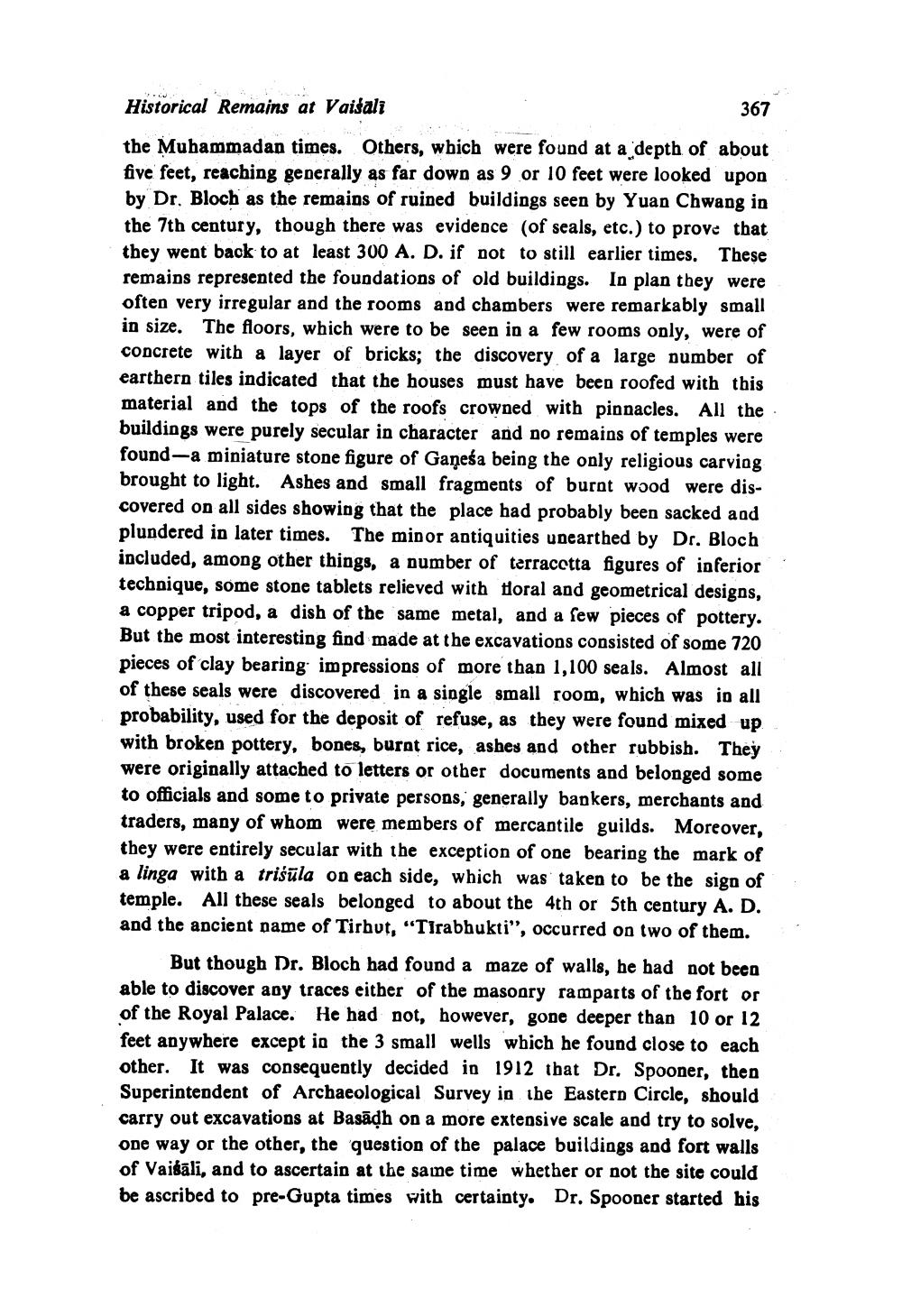________________ Historical Remains at Vaisali 367 the Muhammadan times. Others, which were found at a depth of about five feet, reaching generally as far down as 9 or 10 feet were looked upon by Dr. Bloch as the remains of ruined buildings seen by Yuan Chwang in the 7th century, though there was evidence of seals, etc.) to prove that they went back to at least 300 A. D. if not to still earlier times. These remains represented the foundations of old buildings. In plan they were often very irregular and the rooms and chambers were remarkably small in size. The floors, which were to be seen in a few rooms only, were of concrete with a layer of bricks; the discovery of a large number of earthern tiles indicated that the houses must have been roofed with this material and the tops of the roofs crowned with pinnacles. All the buildings were purely secular in character and no remains of temples were found-a miniature stone figure of Ganesa being the only religious carving brought to light. Ashes and small fragments of burnt wood were discovered on all sides showing that the place had probably been sacked and plundered in later times. The minor antiquities unearthed by Dr. Bloch included, among other things, a number of terracotta figures of inferior technique, some stone tablets relieved with floral and geometrical designs, a copper tripod, a dish of the same metal, and a few pieces of pottery. But the most interesting find made at the excavations consisted of some 720 pieces of clay bearing impressions of more than 1,100 seals. Almost all of these seals were discovered in a single small room, which was in all probability, used for the deposit of refuse, as they were found mixed up with broken pottery, bones, burnt rice, ashes and other rubbish. They were originally attached to letters or other documents and belonged some to officials and some to private persons, generally bankers, merchants and traders, many of whom were members of mercantile guilds. Moreover, they were entirely secular with the exception of one bearing the mark of a linga with a trisula on each side, which was taken to be the sign of temple. All these seals belonged to about the 4th or 5th century A. D. and the ancient oame of Tirbut, "Tirabhukti", occurred on two of them. But though Dr. Bloch had found a maze of walls, he had not been able to discover any traces either of the masonry ramparts of the fort or of the Royal Palace. He had not, however, gone deeper than 10 or 12 feet anywhere except in the 3 small wells which he found close to each other. It was consequently decided in 1912 tbat Dr. Spooner, then Superintendent of Archaeological Survey in the Eastern Circle, should carry out excavations at Basadh on a more extensive scale and try to solve, one way or the other, the question of the palace buildings and fort walls of Vaisali, and to ascertain at the same time whether or not the site could be ascribed to pre-Gupta times with certainty. Dr. Spooner started his




